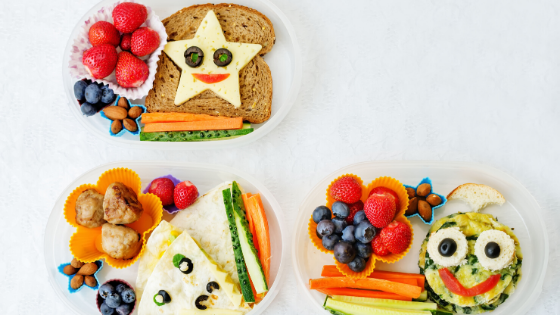
By Nicola Murphy, Nutritionist
The sandwich was the staple of the Irish lunchbox for decades! Some of today’s parents can be very creative producing very exotic lunchboxes but for others it is a daily challenge, especially if they are dealing with fussy eaters! Trying to ensure the content of the lunchbox is nutritious, balanced and tasty can require some inspiration!
Lunches and snacks obviously need to provide children with enough energy to sustain them through the school day but it is essential to include a combination of good complex carbohydrates, proteins and fats as well as a selection of fresh fruit and vegetables.
Choose wholegrain carbohydrates such as soda bread, wholegrain pittas, brown rolls, brown spelt bread, ryebread, oatcakes and rye crackers. Wholegrain pasta, rice and quinoa may be used for salads. The slow release of energy from wholegrain carbs will prevent those energy dips and sleepiness.
Good protein foods are vital for growth and repair so obviously important for growing kids but they also play a role in sustained energy release. Choose from fish (salmon and tuna), chicken, turkey, eggs, cheese, hummus and yoghurts. Nuts are another great protein source but generally not allowed in schools due to the prevalence of nut allergies so best eaten at home. Beans and lentils (important protein source for vegetarian/vegan children) can be incorporated into salads and if food flasks are allowed, they can be incorporated into soups and stews for older children.
Don’t forget the good fats! They are crucial for children’s brain development and concentration. Studies on fish oils in particular have provided some very encouraging results on concentration levels in children. Incorporating oily fish into the lunchbox in a sandwich/pitta or a salad will boost their Omega 3 intake. Seeds such as pumpkin, chia or sunflower, avocadoes and olives are other sources of good fats.
Compile a menu of sandwich fillers – avocado and egg, avocado and banana, hummus and beetroot, tuna mayo and cucumber, cream cheese and salmon, chicken mayo with mango/grape etc. Try to add some greens such as salad leaves and cucumber into sandwiches whenever possible. Adding a tiny amount of chutney or a little relish may encourage them to polish them off!
Salads can make an interesting change. Try out different types of lettuce and see what they like best. Make sure you add a good protein food such as chunks of feta or cheddar, egg or fish as they will need this to sustain them through the day. Include cubes of cucumber, beetroot and avocado or olives. Use cherry tomatoes as they won’t go soggy. Including fruits such as melon, pineapple or apple may make it more enticing. A little dressing such as raspberry or balsamic vinaigrette may add that extra touch to have them clearing the bowl!
Colour and variety are key to encouraging kids to eat more fruit and vegetables. Cut fruit into bite sized chunks or sticks where appropriate. Include apples, pears, melon, blueberries, raspberries, kiwis, grapes and bananas. Kids love dipping so they might like to dip carrots, celery or cucumber into hummus, a cheese dip, avocado dip or a homemade tomato salsa.
Most children love yoghurts and there is a huge selection available from goats and cow’s milk to soya and coconut. Avoid yoghurts laden with sugar or those containing artificial sweeteners. Some producers are adding fruit purees to sweeten their product in recent years. However a far healthier and economical option is to buy large tubs of natural/greek yoghurt (unsweetened) and make batches of homemade puree. Combine cooked frozen fruits such as raspberries, strawberries, cherries and blueberries with apple or pear to make delicious purees without any additional sugar required. Just add some puree to yoghurt and/or a sprinkle of granola and you have a delicious snack.
Life is hectic for most parents these days so any time saving ways of preparing lunches are welcome. If cooking rice or pasta, cook extra that can be used for pasta/ rice salad for lunch the next day. For older kids, cook extra curry, stew or soup that can be put in a food flask for lunch. Cooking an extra portion of salmon that can be used as a sandwich filling or cooking joints of meat or a whole chicken for dinner and using the remainder for sandwiches the next day is far healthier than the processed versions and more economical. Cold quiche or falafels with some salad can make a nice lunch alternative.
Holidays are a great time to develop new lunchbox ideas with the help of the kids – their “buy in” should encourage them to eat their lunches! Try out some new recipes for salads, savoury muffins, flapjacks etc. Experiment with new picnic foods that might become new lunchbox favourites. Investing in a selection of re-sealable pots of varying sizes may also be worthwhile. It helps to keep foods separate from each other, preventing smells and flavours from mixing. This should keep the fussy eaters happy too!